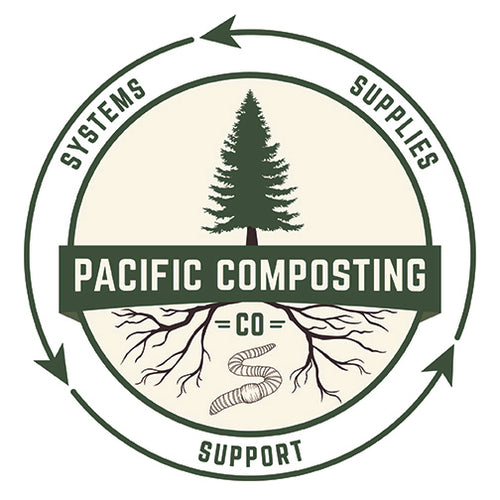Part 3 of Fall - A Great Time to Get Your Backyard Composter Going!
What we’ve described in Setting Up Your GeoBin for Worm Composting Success - especially for cases where you plan to max out your GeoBin volume - offers a solid way to get a system ready for fall (worm) composting. In most locations, you should at least end up with a nice jumpstart on your spring composting season.
But, if you really want to ramp things up, we recommend either of these strategies (depending on your situation and goals):
- Mounding soil and/or fall leaves (straw etc) up around the outer walls of the lower half of the bin can boost your protection (and help to ensure continued microbial action) that much more!
- An ultimate “next level” approach - well suited for those in colder regions, or who really want to try and keep the system as active as possible - would involve basically burying your GeoBin in a heap of leaves (and/or other similar loose, lightweight bedding material), and then securing a tarp over top.
This second approach is best implemented once temps really start to drop, but before you have any real snow on the ground.
Speaking of snow…
For those of you who end up with a decent amount of snow, the good news is that this can be great for insulation as well.
Key Take-Aways
- Fall is a great time of year to start new composting systems and overhaul existing ones, since there is usually a lot of available materials, the weather conditions tend to be more favourable, and it gives us a great jumpstart on producing a supply of rich compost for the spring gardening season.
- Adding composting worms to outdoor systems - such as the GeoBin - can greatly improve the speed and efficiency of the process (especially when using a high proportion of “browns”), it can reduce your chances of attracting animals, and you can end up with an even more valuable end product!
- Digging a pit underneath all of your larger, outdoor worm composting systems is a great way to help protect the worms during cold winter months (works great for hot weather as well), and ensure that your microbes are active for longer as well.
- Layering, and using a diversity of habitat materials (use the materials you have easy access to) and amendments are both highly recommended for these types of systems.
- Concentrate most of the food down towards the bottom, and fill the upper zone with mostly insulative bedding materials, so as to avoid drawing the worms up and risk having them killed by the cold.
- Mound soil and/or fall leaves up around the lower half of your bin for additional cold weather protection.
- In colder regions (or when you want a more active system), you can take things to the next level by basically burying your system in leaves/straw etc and securing a tarp over top (if you get lots of snowfall during the winter this can also be great for mounding up around outdoor systems)
We hope this article helps inspire more of you to get excited about (and involved in) the amazing fall composting season!
Always keep in mind that there is a BIG difference between surviving and thriving for composting worms. As great as these methods are for extending your composting season, and providing you with a great source of compost early in the spring season, you shouldn’t realistically expect to keep this type of system fully active, all year long, in most Canadian locations.
See previous:
Part 1: Fall - A Great Time to Get Your Backyard Composter Going!
Part 2: Learn how to set up your GeoBin for Worm Composting Success

